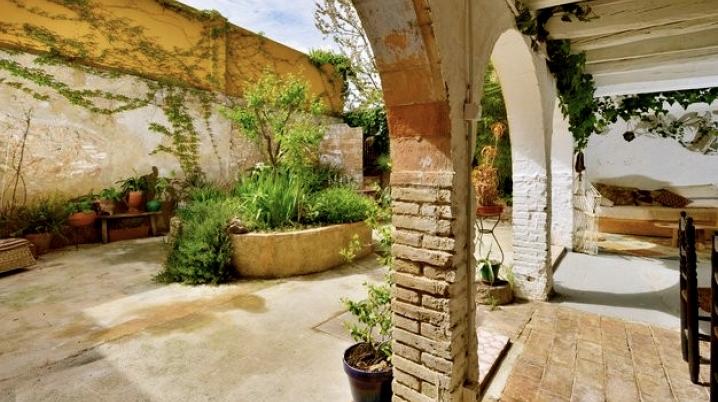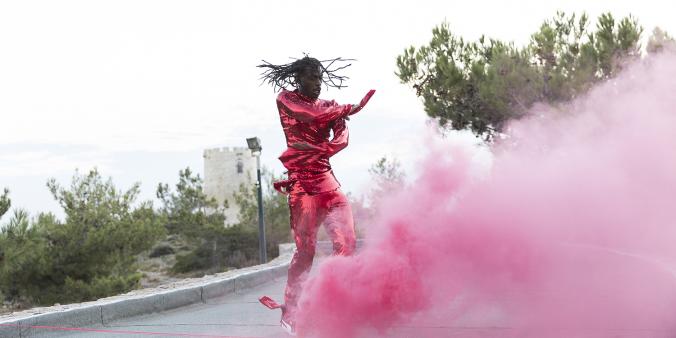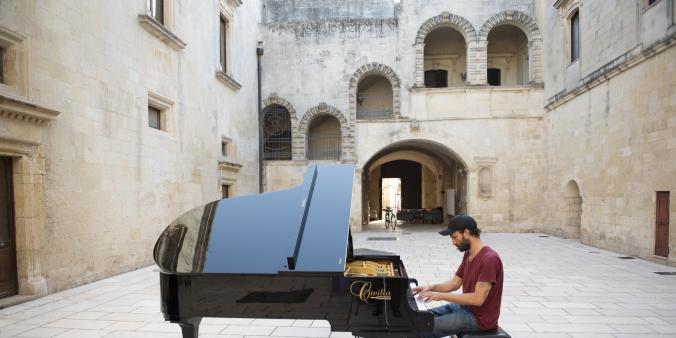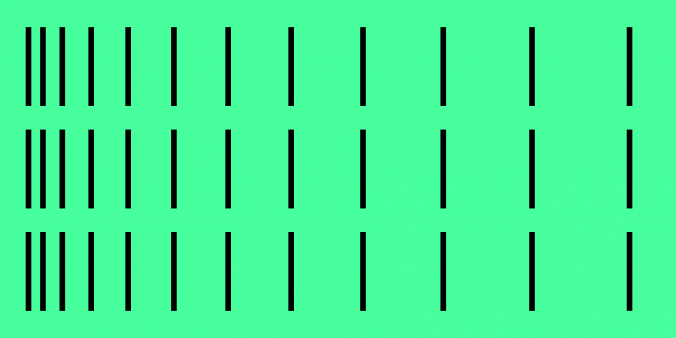Nick Verginis is a research trainee on the DutchCulture | TransArtists team as part of his master’s degree programme in Cultural Leadership at the University of Groningen. His research focuses on the role of hosts of artist residencies in Southern Europe. This article is the second in a series of articles.
How to live together. That was the subject that Roland Barthes discussed in his famous 1977 lecture series at the Collège de France, where he examined whether it is possible to create an 'idiorrhythmic' community [idios = particular + rhuthmos = rhythm] that respects each individual’s own personal rhythm. Originally used in religious terms to refer to the monastic lifestyle of living in solitude while always retaining a need for the communal, Barthes uses this term to examine how the individual and the collective 'rhythms' can co-exist harmoniously. Being aware that individual and collective interests do not exist separately from each other, but rather presuppose and depend on one another, Barthes uses literary imagination to approach this research in a fragmented linear way, since he identifies rhythm as a pattern of fluid elements. Although he does not necessarily pursue this interest in political and socio-economic terms, the incentive to investigate alternative paths seems as relevant as ever.
Why is that, and how does it relate to artist residencies? If we take a look at the history of artist residencies, going on a residency seemed to be a privilege reserved for the solitary ’nomadic genius’, who could afford to spend time in a usually remote location, in order to take inspiration’ and enhance their creativity in direct proximity to nature. In today’s highly individualistic art market, artist residencies have become a highly fashionable requirement in every artist’s curriculum vitae, acting almost as badges, or tickets for the next step of their artistic career. Moreover, participating in an artist residency programme can provide artists with a feel-good factor, a reward received for stepping outside their comfort zone, while continuing to be productive in a new environment.

The stakes
So what happens when artists in residencies are not productive? How can their productivity be measured, and how does it influence their living conditions? A first step in approaching these questions would be to recognise the presumed nomadic genius who can afford mobility away from social obligations, which excludes artists living in precarious conditions. Artist residencies may have become increasingly popular, but this does not necessarily mean that such residencies are enough to pay the bills, since, in most countries, artist residencies lack structural funding and official frameworks. However, behind the financial issues, there exists a political aspect that should also be discussed.
According to Nikolas Ventourakis, a Greek visual artist, photographer, and artistic director of Lucy Art Residency, the most significant issue is that there still exists a lack of understanding and professionalisation in the field. “In fact,” he says, “the stakes are much higher for artists, who are also seemingly receiving ’provisions’, and ’benefits’ that keep them always in a disadvantageous position, which should neither be seen as an investment nor as a collaboration in a straight sense of the word.”
As a result, artists are forced to treat grants and projects as jobs, except that these jobs do not allow them time and space for immaterial labour, such as research and experimentation – even though these are, at the very least theoretically, vital to the artistic creation process – because they otherwise risk finding themselves without a source of income between contracts and projects. A paradox, from the viewpoint of the Barthesian approach to idiorrhythmia, because living together would imply a space, and a rhythm would imply a time, both of which often seem unaffordable in today’s art world.
Towards professionalisation
Indeed, when given carte blanche to use their residency time as they wish, as 'free time', most artists become over-productive, due to some sort of ingrained guilt of not being productive. This derives from the same lack of professionalisation that exists in the artistic field in general, which leads artists and curators to label everything they do as work, having often been accused of hobbyism or forced to work under a different fiscal label due to a gap in the formal recognition of their profession. Fortunately, unions and institutions are increasingly mobilising, making efforts towards unionisation with the aim to achieve recognition of artistic labour. As part of this process, definitions should also be established for the prerequisites, the expectations, and the rights that must be included in every professional endeavour. Thus, productive time could be redefined and viewed through a political lens, with the aim of achieving new conditions for artists and their labour.

Getting priorities straight
While the artists’ time has been more prominently addressed in this discussion, the residency hosts’ time should also be considered and respected, because hosting a residency is hardly ever a financially sustainable choice. Moreover, next to the financial hardship, is the emotional challenge as well. Pau Cata, the founder of CeRCCa, an artists-in-residence programme and research centre outside of Barcelona, chose to adopt an idiosyncratic approach in which he lived together with the artists during their stay. This arrangement helped blur the boundaries between host and guest, thus eliminating any hierarchies, but at the same time, it was more demanding of him, as it led to an intermixing of the personal with the professional, the public with the private, etc. As a result, the time and space of the host in artist residencies are often diminished in quality, because the host strives to meet and sustain the artists’ expectations, needs, and productivity, regardless of their own or the organisation’s needs and possibilities.
However, it is fair to say that recent events have shown that, regardless of this underlying situation, there are often other matters of primary importance that make these issues secondary. While the impact of the COVID-19 pandemic on the digitalisation of culture and the understanding of the benefits that digital humanities could offer to the field has been largely documented, recent humanitarian crises, such as the war in Ukraine and the earthquake that devastated Turkey and Syria, prove that culture can be essential in protecting and safeguarding those most severely affected. In these cases, all structures become redundant and flexible, and the only thing that matters is finding ways of being together and living together, away from any market metrics, instead following the rhythm of each individual and the rhythm of each particular collective. In that way, care and sustainability are practised instead of theorised, and living together is actualised, if only temporarily.






